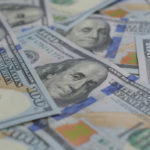
(NEW YORK) — Tech giant Apple last week announced a buzzy product release — but it wasn’t a new version of its iPhone or virtual reality headset. Rather, the company offered its first ever high-yield savings account.
The move reflects growing demand for returns on savings as a topsy-turvy stock market, looming recession fears and aggressive interest rate hikes transform the old-fashioned savings account into a newly attractive financial option, personal finance experts told ABC News.
However, the yields on savings accounts could shift downward if the Federal Reserve reverses its policy of rate hikes, and prospective consumers should make sure that an account offering retains government insurance protection, they added.
Here’s what to know about the rise of high-yield savings accounts, and how to decide whether to open one:
What is a high yield savings account?
Financial institutions have not settled on what exactly constitutes a high-yield savings account, experts said. But the name indicates the key characteristics of this financial product: a savings account that delivers high returns.
While no specific threshold earns an account the moniker of “high-yield,” the enhanced savings from such accounts can prove substantial, experts said.
The average yield for a savings account is 0.24% annual percentage yield, meaning that a typical customer earns a fraction of a percentage point of interest each year for his or her savings deposit, according to Bankrate.com data from last week.
High-yield savings accounts, however, offer customers as much as 5% annual percentage yield, Mark Hamrick, Washington bureau chief and senior economic analyst for Bankrate.com, told ABC News.
“Over a prolonged period of time, it can make a huge difference,” Hamrick said.
For instance, a high-yield saving account that holds $10,000 could return as much as $500 per year. However, if a customer deposits the same amount in a bank account yielding 0.25% each, he or she stands to see just $25 in annual return, Hamrick said.
Instead of seeking out high-yield savings accounts at brick-and-mortar banks with household names or local branches, customers will more often find them at online banks, Christine Benz, the director of personal finance at Morningstar, told ABC News.
Online banks face lower expenses, since they aren’t paying for a commercial space or local bank employees, Benz said.
“Online banks are able to offer more competitive, better yields,” Benz said.
Why are high-yield savings accounts on the rise?
High-yield savings accounts have grown in popularity amid a string of rate hikes from the Fed that have allowed some banks to offer attractive returns and damaged the performance of alternative financial vehicles like the stock market, experts said.
“We’ve seen a huge rise,” Hamrick said.
Over the last year, the Fed has raised interest rates at a breakneck pace not seen since the 1980s.
The interest rate hikes make it more lucrative for banks to hold money, which in turn puts pressure on financial institutions to pass along some of those earnings to depositors through higher yields.
As a result, some banks have bid up each other’s yield offerings to attract customers, Hamrick said.
“They’ve got to be competitive with their rivals,” Hamrick said.
Meanwhile, high interest rates have pummeled some alternative investment options, like stocks. The S&P 500 has dropped about 3% over the past year, though it has surged in recent months.
“A savings account is pretty safe money right now,” Hamrick said.
What are the downsides of a high-yield savings account?
A major drawback of a high-yield savings account stems from the unpredictability of its yield, which shifts in rough correlation with the interest rate environment, Benz said.
If the Fed decides to reverse its rate policy and start bringing down borrowing costs, the high-yield accounts would likely suffer.
“With any type of savings account, the interest rate will vary significantly on an ongoing basis,” Benz said.
Moreover, personal finance experts cautioned that customers should make sure that a given high-yield account falls under government insurance protection, especially in light of recent tumult in the financial system.
The Federal Deposit Insurance Corporation, or FDIC, which safeguards the stability of the financial system, protects depositors at all FDIC-insured banks for up to $250,000 in funds for each different type of account held.
Nearly every bank is FDIC insured, and the vast majority of accounts fall below the $250,000 threshold.
Insurance also covers balances held with the high-yield savings account offered by Apple through its partnership with Goldman Sachs, Apple said.
Meanwhile, high-yield savings accounts often require a minimum deposit size for customers to qualify for the strong returns, Benz said.
“Relate that to your own expectations of how you’ll use the funds or the account,” she said.
“If you’re thinking of it as a checking alternative and don’t think you’ll be able to maintain the minimum balance, you won’t be able to maintain that full yield,” she added.
Copyright © 2023, ABC Audio. All rights reserved.
